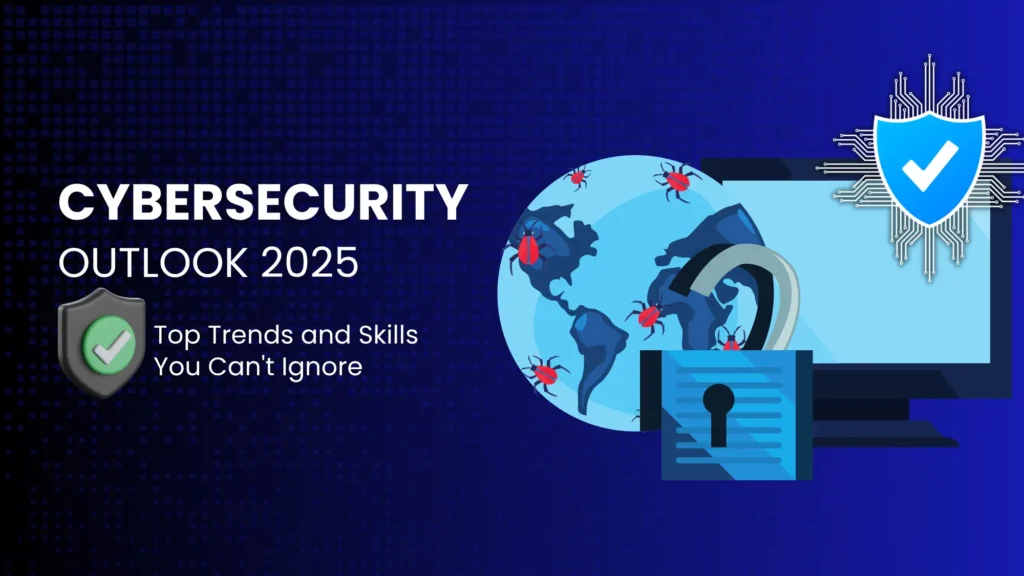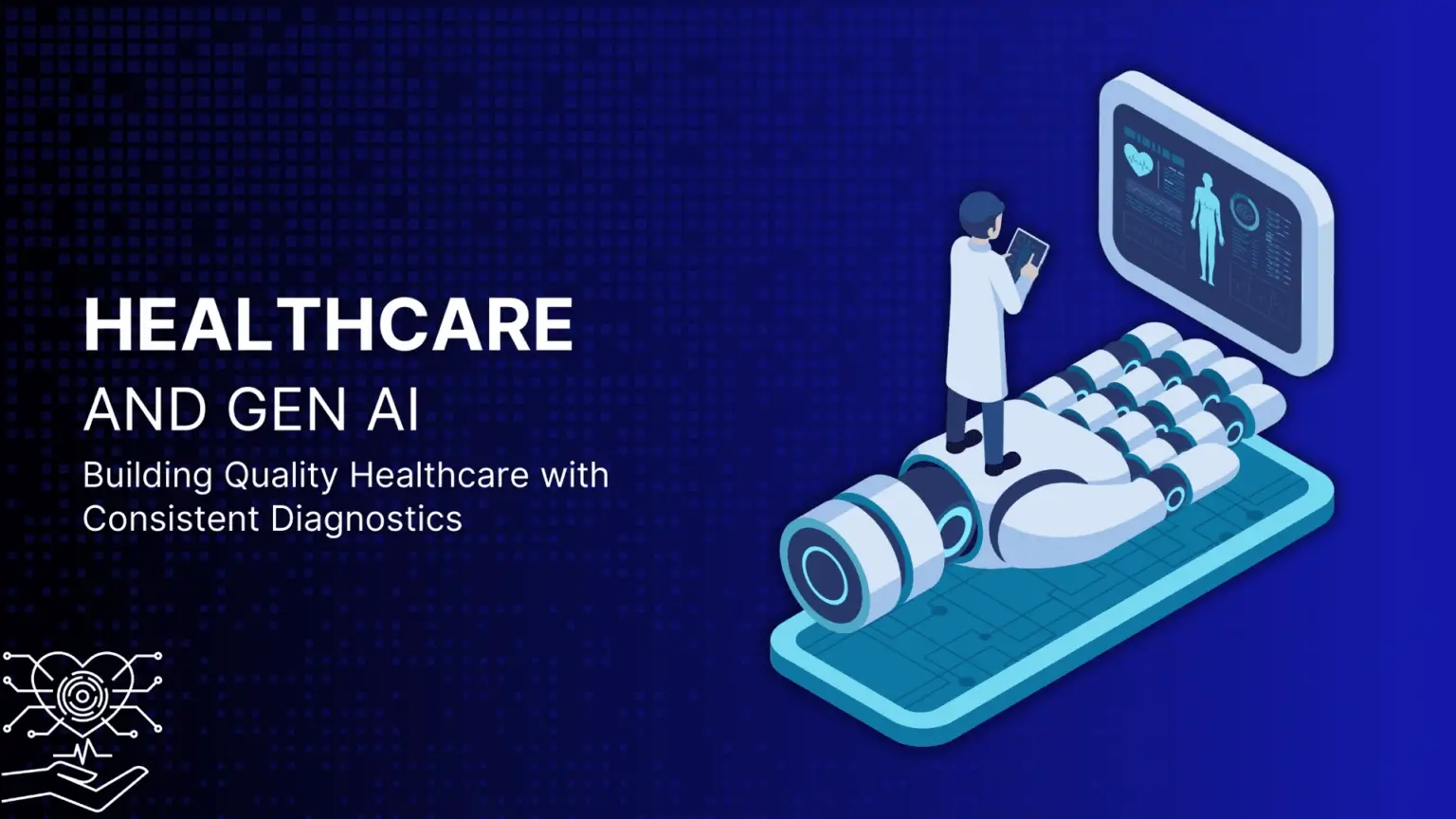2025 Cybersecurity Outlook: Top Trends and Skills You Can’t Ignore

The upcoming new age requires the best digital solutions for all your business problems, and cybersecurity must survive in the digital age. With the rise in AI (artificial intelligence) &ML (machine learning), cybersecurity threats also evolved with them; to protect the customer’s data and safeguard all information from cyber attacks, businesses need to equip themselves with the latest technology and skills to gain the competitive edge. In this blog, we will disclose the top cybersecurity technology for 2025, researched by Infosprint technologies, and the skills that businesses and individuals must possess to survive the digital age.
The Evolving Cyber Threats Landscape
- The Dark Side of AI: Evolving Cyber Threats
- AI can learn, adapt, and create new malware that harms software, which has become a haven for criminals to acquire revolutionary technology. The all-powerful AI has become a double-edged sword. With the capability to evolve the cyber threat landscape to create more brilliant scams, by 2025, there is anticipated to be a 25% increase in cyber attacks involving AI.
- Ransomware Attacks
- Attacks using ransomware have increased, affecting businesses in all industries. It is anticipated that by 2025, hackers will employ increasingly sophisticated evasion and encryption tactics in their operations, making them more refined. The threat has increased due to the rise of Ransomware-as-a-Service (RaaS) platforms, which have also made it simpler for inexperienced hackers to initiate assaults. Global cyber damage is expected to reach $10 trillion by 2025, with most of the damage coming from identity theft used to hold companies and individuals ransom. This information is based on a cybersecurity venture.
- DDOS (Distributed denial-of-service)
- Attacking the company website by flooding its traffic, excessive traffic can render their service unavailable.
How DDoS Attacks Work:
a. Botnet Creation: Attackers create a botnet, a network of compromised devices (e.g., computers, IoT devices) under their control.
b. Attack Initiation: The attacker instructs the botnet to send many requests to the target system or website.
c. Resource Exhaustion: The influx of traffic overwhelms the target system, leading to resource exhaustion and potential service disruption.
- The Hidden Danger of Supply Chain Attacks
It is anticipated that supply chain attacks, in which cybercriminals breach systems via unaffiliated vendors or service providers, would increase in frequency and complexity. By focusing on less secure partners, these assaults take advantage of the interconnection of contemporary enterprises to obtain access to more secure networks. It will be crucial to guarantee the security of the whole supply chain. Global cyber damage is expected to reach USD 10 trillion by 2025, with most of the damage coming from identity theft used to hold companies and individuals ransom. This information is based on a cybersecurity venture.
- The IoT proliferation
By 2025, billions of connected devices are anticipated on the Internet of Things (IoT). Every device is a possible cyberattack entry point, increasing the attack surface. There will be serious concerns about the difficulty of protecting these devices, particularly in sectors like manufacturing, healthcare, and smart cities.
Secure Your Digital Assets: A Must-Have Cybersecurity Strategy in 2025

- Cyber insurance
In today’s connected world, businesses are more exposed to cyber attacks. The potential harm caused by cyber disasters can be disastrous, ranging from ransomware attacks and data breaches to phishing schemes and malware infections. Cyber insurance enters the picture, providing an essential extra degree of defense against these online threats.
In recent years, cyber insurance firms have seen a notable rise in the premiums they collect. The estimated value of the worldwide cyber insurance market in 2017 was $3 billion. However, it is expected to soar to $20 billion by 2025. This exponential rise reflects both the increased sophistication of cyberattacks and the growing awareness of the risks associated with them.
- Passwordless Technology
Passwordless authentication is rapidly gaining momentum and will soon become the standard for login security. As technology advances, we expect to see even more innovative and secure passwordless methods emerge.By embracing passwordless authentication, organizations can enhance their security posture, improve the user experience, and stay ahead of the evolving threat landscape.
- Artificial Intelligence and Machine Learning in Cyber Defense
By 2025, artificial intelligence (AI) and machine learning (ML) will likely impact cybersecurity more. These technologies analyze massive amounts of data in real-time, enabling firms to detect and precisely respond to threats. Artificial intelligence (AI)-driven security systems are essential for thwarting more complex attacks because they can recognize trends, anticipate possible risks, and automate countermeasures.
- Cybersecurity Mech Architecture
The growing concept of Cybersecurity Mesh Architecture (CSMA) encourages a modular and adaptable approach to security. CSMA enables the deployment of security controls closer to the assets they safeguard instead of depending solely on a single, centralized security system. Using a decentralized model, companies better withstand security risks and respond swiftly.
a. Foundation: Risk assessment, policies, compliance
b. Sensory Systems: Threat intelligence, monitoring, endpoint security
c. Cognitive Systems: Analytics, incident response, AI/ML
d. Defensive Mechanisms: Firewalls, IDPS, DLP, encryption
e. Adaptive Systems: Patch management, vulnerability management, awareness training
- Zero Trust Architecture
Under the tenet “never trust, always verify,” the Zero-Trust model is gaining momentum quickly. Zero-trust architecture (ZTA) will be the cornerstone of cybersecurity by 2025, mainly as remote work continues to erode the boundaries of the conventional network perimeter. Strict identity verification, network segmentation, and ongoing user and device monitoring—regardless of where they are on the network or off—are all part of ZTA.
Must-Have Cybersecurity Skills for 2025
With the rise in cyberattacks, one needs the necessary skills to protect themselves against cyber threats. Here are a few skills required by 2025 to stay safe from cyber threats.
- Proficiency in AI and ML
As mentioned above, AI is a double-edged sword; it can harm and protect against cyber attacks. Understanding and leveraging the technology will be essential for cybersecurity professionals. Experts must be proficient with AI-powered tools and be thoroughly aware of how these technologies might be utilized to prevent and possibly initiate cyberattacks.
- Cloud security expertise
Cloud computing services are highly sought-after technologies to adapt to, and expertise will be highly required for cloud security. Cybersecurity professionals must be skilled in securing multi-cloud environments, implementing identity and access management (IAM) solutions, and ensuring data protection across various cloud platforms. Knowledge of cloud-specific security tools and practices will be critical.
As organizations embrace cloud computing, the demand for cloud security expertise will only increase. Cybersecurity professionals who deeply understand cloud security principles, tools, and best practices will be highly sought after. By investing in cloud security skills, organizations can protect their sensitive data, mitigate risks, and ensure the continued success of their cloud initiatives.
- Implementing Zero Trust
As Zero Trust Architecture becomes the standard, professionals will require proficiency in creating, implementing, and managing Zero Trust frameworks. This entails awareness of identity verification, network segmentation, and ongoing monitoring. One valuable talent will be incorporating Zero Trust ideas into current security infrastructures. By understanding the critical components of Zero Trust and addressing the challenges involved, organizations can significantly enhance their cybersecurity posture and protect their valuable assets.
- Quantum-Post Cryptography
As quantum computing technology evolves, the need for quantum-resistant cryptographic algorithms becomes increasingly urgent. Quantum computers have the potential to break many of the cryptographic algorithms currently in use, including those that underpin public-key cryptography, which is widely used for secure communication and data encryption. Quantum-resistant cryptography is a critical area of cybersecurity that will become increasingly important in the future.
Cybersecurity professionals who possess the necessary knowledge and skills will be well-equipped to protect organizations from the potential threats posed by quantum computing. By staying informed and adapting to the evolving landscape, they can help ensure the security of digital assets in the quantum era.
- Communication and collaborations
Cybersecurity is a widespread issue, so it will not just be a headache for the IT department; professionals must communicate effectively with their stakeholders, employees, and customers. This requires strong communication skills and translating complex technical information into understandable terms.
How Your Business Can Prepare for 2025
- Invest in Continuous Learning and Development
- The cybersecurity landscape is constantly evolving, and the essential skills today may become obsolete tomorrow. Businesses must invest in their cybersecurity teams’ continuous learning and development to stay ahead of the latest trends and threats. This can involve providing access to training programs, certifications, and conferences and encouraging a culture of learning within the organization.
- Adopting a Proactive Security Approach
- Rather than waiting for threats to emerge, businesses should adopt a proactive approach to cybersecurity. This involves implementing advanced threat detection and response systems, conducting regular security audits and penetration tests, and staying informed about the latest threat intelligence. A proactive approach can help businesses identify and mitigate potential risks before they escalate.
- Building a Culture of Cybersecurity Awareness
- Cybersecurity is not just the responsibility of the IT department; it is a business-wide concern. To stay secure in 2025, businesses must build a culture of cybersecurity awareness among all employees. This includes providing regular training on cybersecurity best practices, encouraging the reporting of suspicious activities, and fostering a sense of responsibility for maintaining security.
- Collaborating with Industry Experts
- Collaboration is critical to staying ahead in the cybersecurity landscape. Businesses should work closely with industry partners, government agencies, and cybersecurity experts to share information about emerging threats and best practices. Participating in industry forums, cybersecurity networks, and information-sharing initiatives can provide valuable insights and help businesses stay informed about the latest trends.
- Prioritizing Cybersecurity in Business Strategy
- In 2025, cybersecurity will be an integral part of business strategy. Organizations must prioritize cybersecurity at the highest levels of decision-making, ensuring that it is considered in all aspects of operations, from product development to customer interactions. The business strategy involves allocating sufficient resources to cybersecurity initiatives, setting clear security objectives, and regularly reviewing and updating security policies.
The Cyber Threat of 2025: Are You Ready?
As we approach 2025, the cybersecurity landscape will become more complex and challenging than ever. The rise of AI-powered cyberattacks, the increasing frequency of ransomware incidents, and the expansion of the attack surface due to IoT proliferation are just a few of the trends that will shape the future of cybersecurity. To stay secure, businesses and professionals must adopt the latest security practices, stay informed about emerging trends, and continuously develop the skills to defend against evolving threats.
By understanding and preparing for these trends, organizations can protect themselves against the growing cyber risks of 2025 and beyond. The key to success lies in staying proactive, investing in continuous learning, and building a culture of cybersecurity awareness. With the right approach, businesses can survive and thrive in the increasingly complex cybersecurity landscape of the future.
Related Posts

Top 10 Cloud Computing Technologies to Look Out for in 2025

Consistent Diagnosis: The Cornerstone of Modern Healthcare




